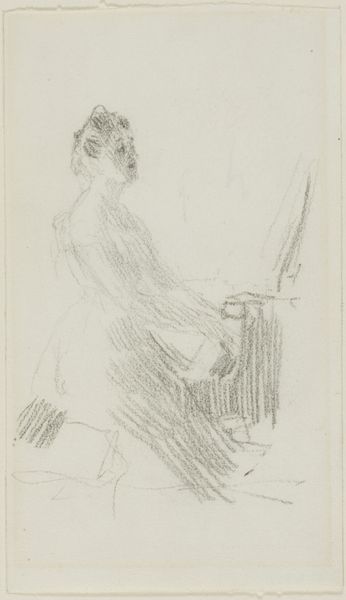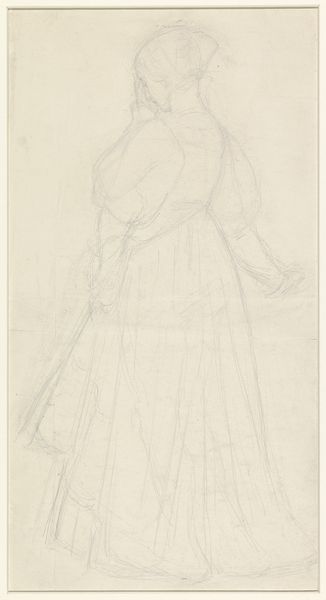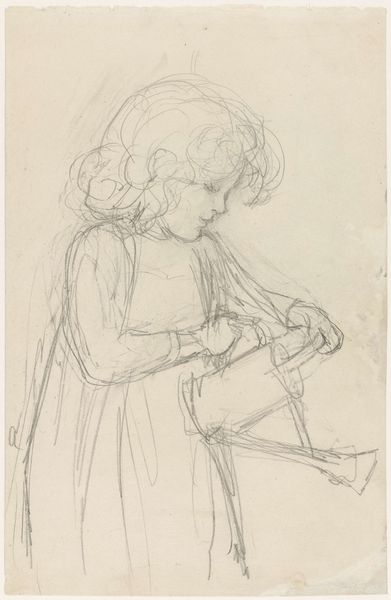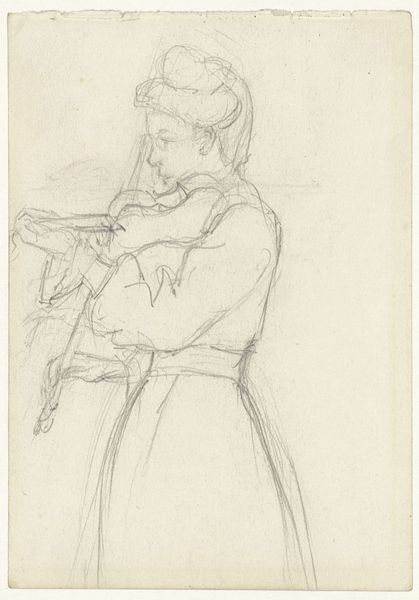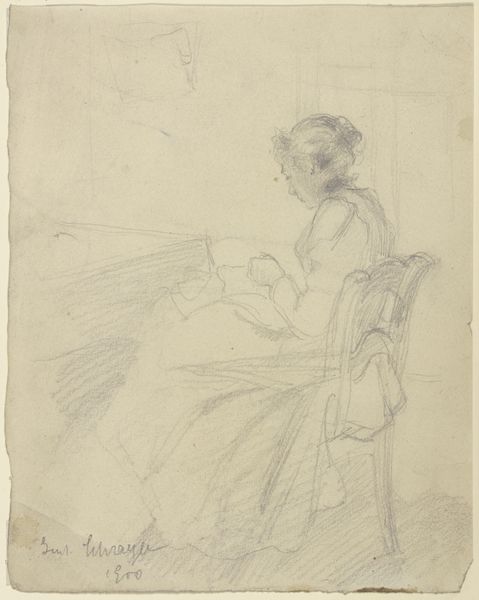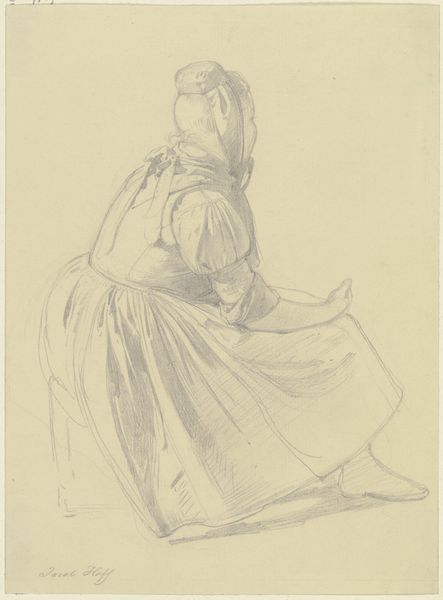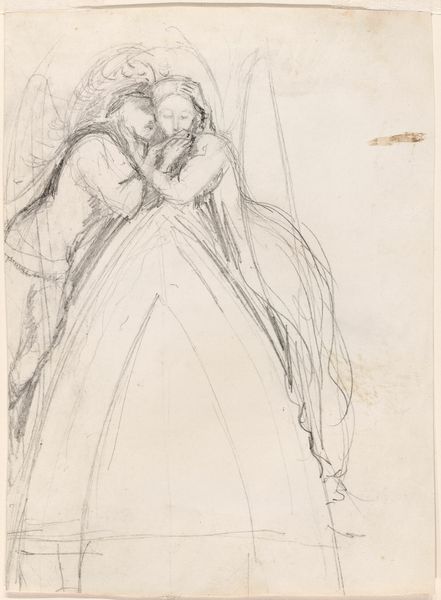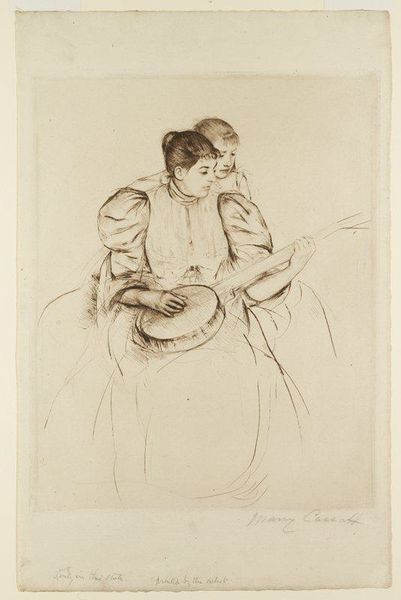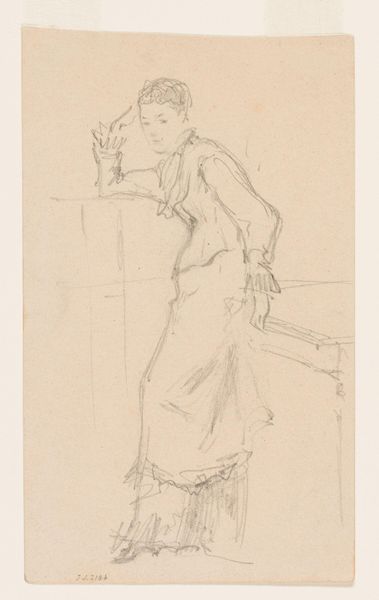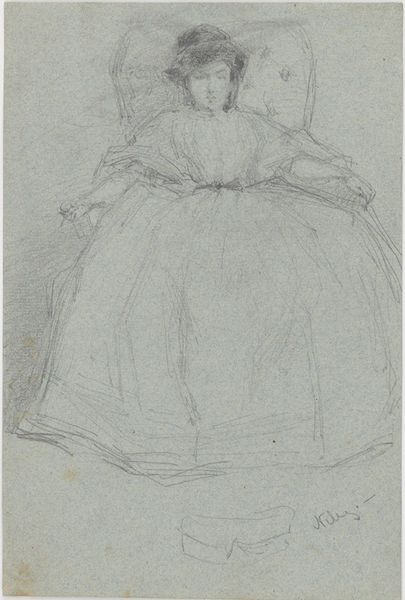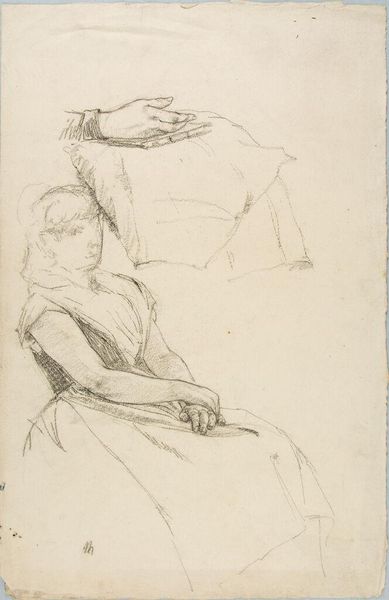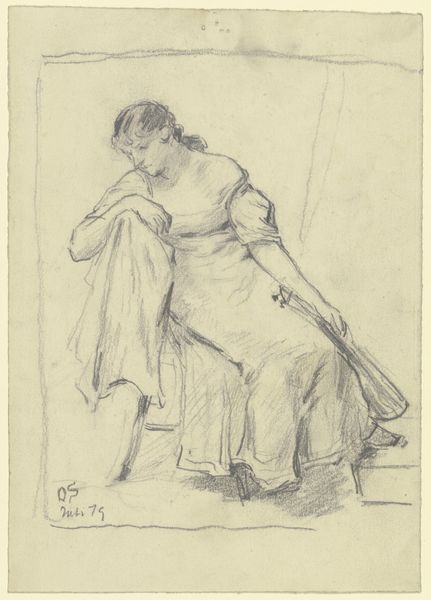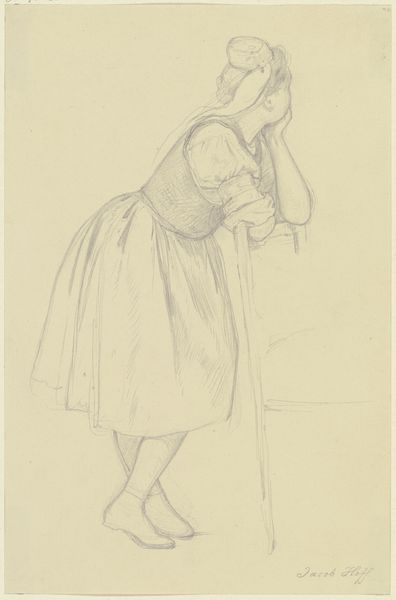
drawing, paper, pencil, graphite
#
portrait
#
drawing
#
self-portrait
#
paper
#
romanticism
#
pencil
#
graphite
#
academic-art
Dimensions: 226 mm × 156 mm
Copyright: Public Domain
Editor: Here we have "Young Woman Painting," believed to be a self-portrait by Elizabeth Murray, created around 1840, using graphite pencil on paper. It has such a delicate, almost tentative feel. What do you see in this piece? Curator: This drawing provides a fascinating glimpse into the constraints and limited agency of women artists in the 19th century. It invites us to consider not only Murray's artistic skill but also her social position. Consider, for example, how female artists, especially during this period, navigated a world that often excluded them from formal training and recognition. Do you notice anything about her gaze? Editor: She's intently focused on her work, almost oblivious to the viewer. There’s a real sense of dedication there. Curator: Exactly. And that dedication flies in the face of societal expectations of women at the time. Murray claims her own artistic identity. It subtly pushes against those boundaries. She is inscribing herself into an art history that often omits her. How does that resonate with you? Editor: I guess it speaks to how women artists had to carve out their own spaces and narratives. It's inspiring, but also a bit sad to think about the obstacles they faced. Curator: Precisely. We see Murray actively engaging in a professional pursuit, yet the medium, graphite on paper, hints at a possible class status that requires a modest collection of tools for self-portraiture. Also, consider the potential performance aspect of this “self” portrait. Does it present the artist in the most accessible fashion for easy recognition, acceptance and career opportunities within the 19th-century art world? The work is an assertion of selfhood and a quiet rebellion. Editor: That’s such a helpful way of framing it. I hadn't considered the wider implications of it before. Curator: By engaging with artworks like Murray's through a contextual lens, we start to reveal layers of meaning that speak volumes about social structures, individual resilience, and the ongoing struggle for representation and agency. Editor: I’ll definitely look at art with those questions in mind. Thank you for highlighting what a complex topic this portrait unlocks.
Comments
No comments
Be the first to comment and join the conversation on the ultimate creative platform.
